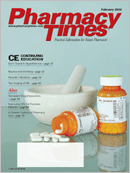Publication
Article
Pharmacy Times
A Quarter Century of Pharmacy Law—And the Fat Lady Is Singing
Author(s):
Issues
The issues are 2-fold in this (my last)column—professional and personal:(1) changes that have occurred in pharmacylaw over the past 26 years and(2) why it is time to turn this column overto another writer.
Facts
(1) The forces that have influenced thecontent of case law over the past 26years are many, but clearly the transitionof many pharmacies from independentownership to corporate employers is significant.Furthermore, the legal definitionof the practice of pharmacy has changedin most states to include not just a dispensingfunction, but also patient counseling,drug utilization review, and, insome states, the administration of drugsand certain prescribing authority. Thisincreased focus on the patient and onpharmaceutical care, rather than on thedrug, has contributed to a whole newbody of case law.
(2) On the personal front, I can stillremember the day in 1979 when IrvRubin, former editor-in-chief of PharmacyTimes, asked me to write a monthly columnon pharmacy law. Little did I knowthat it would become a labor of love.Nowthat I am 60, however, I have entered intoan interesting life passage with a restlessnessfor something different.
The Ruling
(1) I am continually struck by howadmirably pharmacists perform theiractivities. I have scoured the legal literaturefor these 26 years to find cases toreport in this column. Most lawsuitsagainst pharmacists relate to dispensingthe wrong drug or the wrong dose or givingthe wrong directions. Most of thesecases are settled prior to trial. When oneconsiders the pressures of today's workplaceand the billions of prescriptions dispensed,the number of lawsuits againstthe profession is very small—a tribute toall pharmacists.
(2) I have decided to gradually reducemy appointment at the university andspend more time with family, traveling,and serving others. I greatly enjoy mywork with people wrestling with theeffects of Parkinson's disease and myservice to nonprofit organizations.
The Reasoning
(1) The decade of the 1970s was a timewhen many courts analyzed the responsibilityof the pharmacist versus that ofthe manufacturer in drug-liability lawsuits.Although there was considerablejudicial confusion, the courts, fortunately,found that it did not make sense to holdthe pharmacist liable along with themanufacturer in cases alleging defectivecommercially prepared products.
Many of the early cases reported inthis column involved pharmacists beingsued for false imprisonment of shoplifters,parking lot muggings, and other"customer-related"issues—as well asbusiness lease, franchise, and contractcases—because they owned the pharmacies.These suits still occur, but theyare not detected when searching legalliterature, because they involve the corporateemployer instead.
The 1980s were a renaissance time—the changes in pharmacy education, thechanging legal role of the pharmacist,and the attention paid to nondispensingactivities generated considerable professionalenthusiasm, notwithstanding theskepticism of those who felt trappedbehind the prescription counter. Withnew professional duties and the use ofcomputers and technicians, there camean accompanying change in the legalstandard of care to which pharmacistsare measured by the courts.
For example, the pharmacist's dutyto counsel or warn a patient is a subjectthat garnered great attention duringthis time. The profession was eager toprovide patient care. The courts werereluctant to impose new legal duties onpharmacists. Various decisions dissectedthe factual nuances that mightaffect liability, with a number of significantdecisions holding that pharmacistsdo have an expanded responsibility.Yet, the profession still has to convincethe courts that patient-care responsibilityis as much a part of our practice asis dispensing the correct drug.
Cases in the 1990s clearly showed thatpharmacists were primarily employees,not owners. Many lawsuits for wrongfuldischarge, discrimination, and otheremployment issues were reported. Thepressures of the workplace were evidencedby cases alleging corporate negligencefor workload-induced errors.
(2) When asked to continue teachingor writing this column, I think of the otherthings of significance that I might havethe opportunity to do. It strikes me thatmy career will not define my life, but myrelationships with others will. I credit mypharmacy preceptor, Jack Van Norman,RPh, of Swea City, Iowa. His sense of continuedservice is far greater than mine, ashe just retired from the pharmacy whereI trained in the 1960s.
Although I certainly owe my wife andchildren a great debt of gratitude, I dedicatethis final column to my former studentswho remain a daily part of my life.They are an immense source of pride,and the good times we share are a tonicfor the soul.
Larry M. Simonsmeier isEmeritus Professor ofPharmacy Law atWashington State UniversityCollege of Pharmacy.







